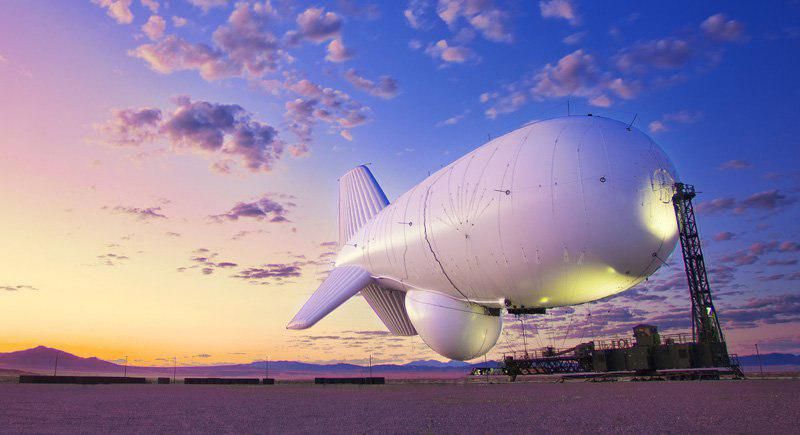An aerostat is a type of lighter-than-air aircraft that gains its lift through the use of a buoyant gas. Aerostats include balloons and airships. In recent years, aerostats have found a new application in surveillance systems. Aerostat surveillance systems, also known as aerostat monitoring systems, use tethered balloons to carry payloads of sensors and communication equipment high into the sky. These systems provide a cost-effective solution for enhancing situational awareness over wide areas.
Radar Surveillance
One of the primary payloads carried by aerostats is radar systems. Radar mounted on aerostats can provide surveillance over a large area due to their high-altitude operation. Aerostat radar systems can detect small low-flying aircraft and boats from over 100 nautical miles away. They are particularly useful for monitoring borders, coastal regions and areas that are difficult to patrol otherwise. The increased radar coverage helps security agencies detect suspicious movements early on. Aerostat radar provides a continuous surveillance capability 24/7 without any gaps.
Imagery Intelligence
Aerostats System also carry electro-optical and infrared sensors to gather imagery intelligence. Day and night cameras on aerostats can monitor areas as large as 45000 square miles from their vantage point high in the sky. They enable security forces to visually monitor large areas for any criminal or terrorist activities. High-resolution cameras can identify people, vehicles and boats from long distances clearly. Thermal imaging sensors provide surveillance even in complete darkness or poor visibility conditions. Imagery from aerostats is transmitted in real-time to ground stations and command centers for analysis. This helps security teams have an accurate picture of the situational awareness.
Communications Relay
Apart from surveillance sensors, aerostats also carry communications payloads like satellite transmitters and receivers. They function as aerial communication towers extending the reach of communications networks. Mobile communications, satellite phones and data links have limited range in remote and rugged terrain. Aerostats positioned above such areas can receive and relay communications to extend the service range of these networks. They provide an aerial communication backbone for areas where it is not practical to set up terrestrial towers. During natural disasters or crisis situations, aerostat communications become vital for coordinating rescue and relief efforts.
Deployment Scenarios
Aerostat systems have proven useful in a variety of deployment scenarios for enhanced surveillance and situational awareness.
Border Security
They are widely adopted along international borders for integrated surveillance. Aerostat radars detect aerial and maritime intrusions while electro-optical sensors provide visual confirmation. This aids border security agencies in intercepting illegal cross-border movement of people and goods. Aerostats along borders help secure stretches which are difficult to physically monitor otherwise.
Force Protection
Military bases employ aerostat systems to enhance security within their perimeters. Radars and cameras provide round-the-clock monitoring of areas surrounding bases to detect any suspicious air or land movement approaching the facilities. This boosts security at bases against external threats.
Critical Infrastructure Protection
Aerostats monitor critical civilian infrastructure like oil and gas rigs, power plants and large industrial facilities. Their surveillance detects threats from aerial or sea-based attacks and infiltration attempts on plant perimeters in real-time. This protects critical national infrastructure from potential sabotage or terrorist attacks.
Search and Rescue
Aerostat communications serve as vital relays for coordinating search and rescue operations during disasters. When terrestrial networks fail, their comms links help coordinate between relief teams, affected populations and local authorities. This speeds up relief efforts and search for survivors.
Advantages
Compared to other aerial surveillance platforms, aerostat systems offer some clear advantages:
– Lower Operational Cost – Aerostats have lower procurement, maintenance and operation costs than manned aircraft, drones or satellites. With no on-board crew needed, operational expenses are minimized.
– Persistent Surveillance – With aerostats in continuous operation, they provide persistent surveillance of an area without any gaps unlike periodic satellite or drone coverage.
– Wide Area Monitoring – A single aerostat mounted with appropriate sensors can continuously monitor an area of over 45,000 sq. miles which would otherwise require multiple aircraft or patrol teams.
– Rapid Deployment – Aerostats can be rapidly deployed and relocated as needed compared to building terrestrial towers. Deployment time is as low as a few hours.
– Extends Terrestrial Network Range – Aerostat comms act as a bridging solution in places where setting up communication towers is challenging.
– All-weather Surveillance – Their high altitude operation and sensors like thermal cameras enable continuous monitoring independent of weather or lighting conditions unlike piloted aircraft.
Challenges
While aerostat systems offer clear advantages, their deployment also faces some challenges:
– Bound by Tether – Unlike free-floating satellites or aircrafts, aerostats are tethered to the ground which restricts their mobility and agility. Adjusting them requires wind conditions conducive for repositioning.
– Vulnerable to Weather – High winds exceeding operational limitations can damage aerostats or snap their tether lines requiring them to be deflated or relocated for safety. Monsoon seasons render some regions unusable.
– Maintenance Requirements – Prolonged exposure to harsh weather, solar radiations, bird strikes etc require periodic maintenance inspections to replace components and check for faults.
– Regulatory Approvals – Sovereign airspace regulations and radio frequency allocations require approvals from aviation regulatory bodies before deployment over certain regions.
– Target for Hostile Fire – Aerostats act as an elevated sensors making them prone targets for anti-aircraft fire and sabotage attempts, especially in military operations against hostile entities. Redundant safety systems try minimizing this risk.
Future Scope
Aerostat systems have seen growing popularity with security agencies and armed forces worldwide over the last decade. As sensor and communications technologies continue advancing, upcoming applications are expected to further expand the scope of aerostat platforms. Some emerging areas showing promise include:
– Maritime Surveillance – Aerostats optimized for maritime operations with naval radar and electro-optics can aid in coastal monitoring, search & rescue, fishery protection and anti-piracy roles.
– Disaster Monitoring – Dedicated aerostat networks for tropical cyclone, flood, and wildfire monitoring could help disaster management agencies get real-time situational updates from hard hit areas.
– 5G & Internet Connectivity – Experiments are being conducted to use aerostats as aerial cell towers to provide 5G and broadband connectivity to remote regions lacking terrestrial infrastructure.
– Environmental Monitoring – Mounting pollution sensors, weather instruments, and cameras on aerostats can help agencies perform persistent, wide-area monitoring of forests, coasts and climate change impact zones.
– Urban Surveillance – Selected cities worldwide are testing smaller tethered aerostats fitted with urban surveillance sensors for applications like traffic monitoring, special event security and emergency response coordination.
Aerostat systems have come a long way since their initial usage centuries ago. With continuous developments, they are all set to transform aerial surveillance operations in the future with their inherent strengths of persistence, cost-effectiveness and safety. Their growing role ensures aerostats will complement and augment capabilities of manned aviation assets for both civilian and defense applications.
*Note:
1. Source: Coherent Market Insights, Public sources, Desk research
2. We have leveraged AI tools to mine information and compile it




